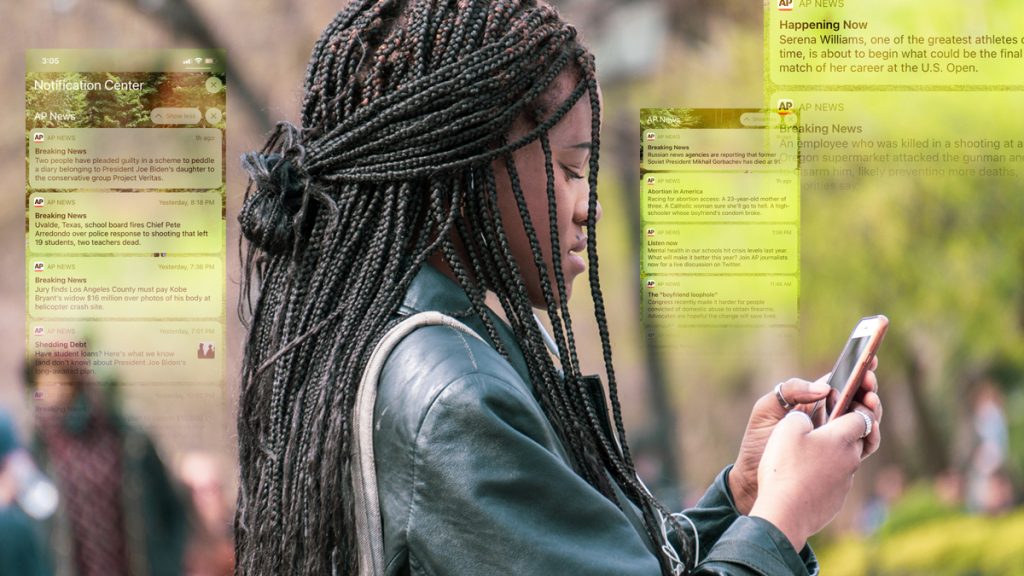
Photo: Terrillo Walls | Unsplash
It’s not easy to craft a push alert strategy
This RJI Fellowship research report offers recommendations and insights on how to improve your approach
A team at the Associated Press studied what consumers say they want from push alerts and compared that to what the data shows, with support from RJI’s institutional fellowship. The researchers found users insist they only want to be interrupted for important news relevant to their lives, but the performance of alerts about celebrity obituaries and college football tells a different story.
Much like choosing stories for the front page of a newspaper, the research found that the key to a smart push alert strategy is using news judgment to selectively pick a mix of what your audience will want and need. Send too few alerts and miss the opportunity to build a connection with readers. Send too many and risk having users either tune you out or turn off your alerts entirely, severing the chance to showcase your newsroom’s best work. Users have other apps competing for their attention, and they only open — or even view — a small fraction of the notifications they get.
The AP team compiled these findings and more into a resource document to share with other news publishers. The report drew from their own push alerts, research studies, surveys and a focus group.
Speaking of that focus group, the AP team ran into a variety of unexpected and unavoidable challenges, as they prepared talk with that group of digital news consumers. Definitely, push alert-worthy challenges.
A team at the Associated Press studied what consumers say they want from push alerts and compared that to what the data shows, with support from RJI’s institutional fellowship.
First came the early days of the pandemic, which generally threw people’s lives and everything else into disarray in 2020. Then just when the news cycle had stabilized enough to begin the focus group, racial justice protests erupted across the country and around the world following George Floyd’s death. These stories were so big, they would most likely dominate and skew focus group results.
On the other hand, those unexpected challenges gave the team the idea to adapt the study to explore not only what news consumers want and need from alerts, but whether that changes when they have been awash in alerts about significant events for months. This also led team members to look at how demand for coverage of a big story can affect interest in other topics, and how newsrooms might think about multiple competing news cycles.
During a major news event like the early days of COVID-19 or the Black Lives Matter demonstrations of 2020, user appetite for what’s new might spike, so it’s essential to monitor clicks and traffic to see what’s resonating with your audience and how that demand might shift.
Some other findings from the research:
- Newsrooms struggle to get full visibility into the performance of their alerts — phone manufacturers don’t make it easy to know how many people read your alert, which leaves clickthroughs as the only meaningful metric.
- The meager data leads to thinking of alerts in a sort of communication ecosystem, along with social media posts and email newsletters, that all try to lead busy readers to relevant content.
- Alerts allow your organization to maintain a conversation with your audience by demonstrating your editorial priorities and voice.
